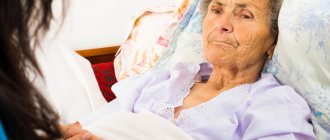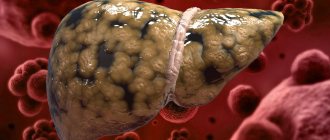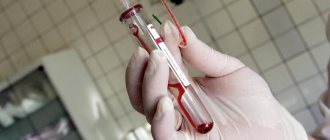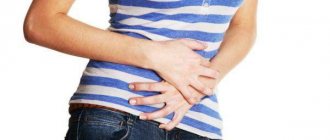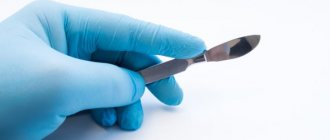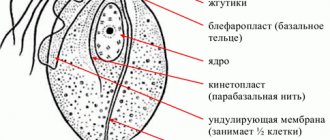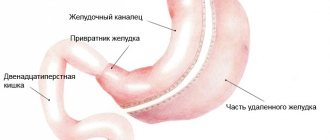Migraine is a headache of low intensity, which is often regarded as a genetically determined reaction or the body’s response to weather changes and stress. The so-called trigger factors - physical fatigue, certain foods, climatic conditions provoke attacks. It is differentiated in 20% of cases of transient headache. It is often a harbinger of heart attack, stroke, and cardiovascular disease. If attacks occur rarely, do not cause a person much discomfort, pass quickly, the disorders are regulated and eliminated using gentle, gentle methods. A pathology such as migraine in women and men can be effectively treated at home.
Causes of migraine development in women
Many people wonder why female migraines occur. Knowing the answer is very important. Indeed, in addition to headaches, additional symptoms and signs appear:
- weakness;
- dizziness;
- nausea and vomiting;
- auditory and visual hallucinations;
- increased sweating;
- tingling of limbs.
The true causes of migraine in women have not been fully established. It mainly affects adults aged 20 to 40 years. Many factors cause the development of the disease. The following conditions contribute to the occurrence of migraine attacks.
Sedentary lifestyle
Low physical activity and sedentary work provoke an increase in muscle tone, especially in the cervical region. Spasms often lead to hemicrania. The occurrence of the disease can also be expected as a result of displacement and deformation of the vertebrae of the neck during constant work at the computer. This, in turn, leads to the fact that incorrectly located vertebrae compress the artery that supplies blood to the central nervous system. Metabolism in neurons is disrupted, and migraine symptoms appear in women.
Arterial hypertension
With elevated blood pressure, vascular tone is disturbed. This provokes an insufficient supply of nutrients and oxygen to the cells of the cerebral cortex. The body works hard under such conditions. When reserve sources of energy come to an end, migraines occur, which are often accompanied by severe weakness. Hypertension usually affects women over 50 years of age.
Bronchial asthma
It has been established that asthmatics have migraine and its accompanying symptoms in more than fifty percent of cases. Both diseases provoke disturbances in vascular tone. Therefore, bronchial asthma favors the development of migraine attacks. And if a woman has been suffering from headaches for a long time, the disease causes the symptoms to become more pronounced.
Diseases of the gastrointestinal tract
It is a known fact that all cells of the body receive nutrients and vital oxygen through the bloodstream. In turn, the necessary substances are absorbed into the blood from the intestines. If at least one of the gastrointestinal organs malfunctions, absorption does not occur in full. This leads to starvation of all organs and tissues. In this case, the central nervous system suffers most, which can easily cause symptoms of migraine in a woman.
Migraine treatment
Diagnosis of the disease is based only on the patient's complaints. it is impossible to check instrumentally . Neither by laboratory tests, nor with the help of modern devices.
But if there is a migraine and its symptoms, then treatment should still be prescribed by a doctor . Since only he can exclude other serious diseases; prescribe medications that are suitable for a particular patient.
For migraine, treatment is selected depending on the individual case, cause, and severity. The specialist selects drugs from these groups :
- Non-steroidal anti-inflammatory drugs. The effect of such medications is small. It can be enhanced with tramadol, a small dose of narcotic analgesics.
- Ergot preparations. Tones blood vessels. They can be used both during an attack and for prevention.
- Triptans. Recently, this particular group of migraine tablets has been used because they relieve vasospasm, block the pain signal, and reduce the fear of light and loud sounds. Contraindicated in patients with coronary heart disease.
- Antiemetics. They are used to directly relieve nausea and vomiting in order to improve the general condition.
- Physical solution. In some cases, infusion in large volumes improves the patient's well-being.
- Dihydroergonamine. Administered intravenously with a dopamine receptor antagonist for severe attacks.
When a migraine occurs, the only question that swirls in your head is how to relieve the pain. Therefore, the patient often immediately uses the analgesic in large doses. And so every time there is an attack.
If you do this for more than half a month, a reverse reaction occurs: when using painkillers, the condition worsens. Therefore, in addition to basic therapy, it is important to engage in prevention .
Provoking factors for migraine attacks in women
In addition to the main causes, there are unfavorable conditions, under prolonged exposure to which women may experience painful symptoms.
Physical fatigue
Intense physical activity of women leads to increased muscle tension throughout the body, especially in the absence of sufficient physical training. Increased stress can lead to migraines. Most often this concerns those who like to give their all in the gym. However, painful symptoms can also appear for other reasons. For example, after participating in a cleanup event or while working in the garden.
Emotional stress
Women are very sensitive, unlike the stronger sex. Frequent psycho-emotional stress, stress, and experiences negatively affect the functioning of neurons in the cerebral cortex. To reduce the likelihood of developing a migraine attack, you should not take everything to heart.
Bad habits
Excessive indulgence in alcohol-containing drinks and smoking leads to improper functioning of blood vessels, especially in women. They alternately narrow and expand. Strong pressure on their walls manifests itself in the form of headaches. In addition, addictions lead to oxygen starvation and the formation of atherosclerotic plaques.
Causes of migraine
Migraine headaches are caused by changes in the lumen of blood vessels in the skin and muscles of the head. The vessels first contract and then expand sharply. The phenomena of aura are associated with a similar two-phase change in the lumen of the carotid artery, which supplies the brain. Modern research notes that migraine attacks occur against the background of increased activity of the brain and autonomic systems. After an attack, the state of these systems returns to normal. Migraine is typical for people engaged in mental work. Among people whose activities involve constant physical activity, migraine practically does not occur.
Meanwhile, the mechanism of migraine has not yet been fully studied. Factors that increase the risk of seizures
, are:
- heredity;
- low resistance to stress, mental imbalance, tendency to depression;
- chronic fatigue;
- smoking;
- diabetes;
- in women – menstruation, pregnancy, menopause;
- taking hormonal drugs.
Factors that are the “trigger mechanism” of an attack are separately identified:
- psycho-emotional stress (stress, strong emotional arousal);
- strong physical activity;
- weather changes (atmospheric pressure fluctuations);
- lack of sleep or, conversely, excessive sleep;
- alcohol (red wine is highlighted);
- some types of products (chocolate, hard cheeses, smoked meats, coffee, fish).
How does it manifest in women?
The most striking manifestation of migraine in women is an acute headache. However, in addition to it, the appearance of accompanying signs is necessary. Symptoms and treatment at home are closely related. The set of measures necessary to relieve pain depends on the clinical picture of migraine attacks. Most often, migraine is accompanied by the following symptoms:
- increased fatigue;
- weakness, dizziness;
- increased heart rate;
- profuse sweating, perspiration on the forehead;
- the appearance of hallucinations;
- confusion;
- nausea, vomiting;
- diarrhea;
- tingling in the arms and legs;
- lack of air, difficulty breathing.
In each individual case, additional symptoms may appear. If characteristic signs appear, contact a medical facility is required. After all, the advanced stage of the disease can be dangerous - migraine often develops into more severe pathologies.
The main types of illness in women are described below.
Common migraine
The main distinguishing feature is the rapid development of the attack. The woman suddenly becomes ill. The danger of this form is that migraine symptoms can appear at the most inopportune moment. For example, during a date, at work, during an exam. Most migraine attacks occur without any warning signs. How long this condition lasts depends on the characteristics of the body. On average, the duration ranges from two hours to three days.
Migraine with aura
With this form of migraine, a woman feels the approach of an attack about an hour in advance. This happens with the help of characteristic preliminary symptoms - an aura. Let's look at what exactly happens:
- bright points of light appear in the eyes, flies flash;
- gradual numbness of the arms, legs, face;
- slurred, confused speech;
- fainting state;
- increased anxiety, depressive mood.
Migraine prevention
For prevention, doctors recommend spending more time in the fresh air, avoiding physical and mental stress, and head injuries. Exercising, getting plenty of sleep and getting proper rest will help prevent an unpleasant, painful condition. It is necessary to reduce the amount of foods in the diet that provoke attacks, including coffee, red wine, chocolate, and cheese. Doctors advise adjusting your daily routine, organizing proper nutrition, and using appropriate preventive medications.
Migraine is an unpleasant condition that significantly worsens the quality of life, interferes with achievements at work, and complicates relationships with loved ones and friends. Severe forms of migraine sometimes provoke a migraine stroke, which can lead to disability. Safe methods of therapy will help in the early stages to effectively combat attacks without medications.
Treatment
Before treating migraine in women at home, you will need to establish what exactly the patient is suffering from. Diagnosis of migraine includes the following research methods:
- Initial interview and examination of the patient. Due to the fact that migraine is difficult to diagnose, information received from the patient is very important. All accompanying symptoms should be described in detail.
- MRI, CT scan of the head region.
- Vascular ultrasound.
- Radiography.
- Laboratory studies of biological fluids.
The listed methods form the basis for making a diagnosis. However, if there is doubt, the doctor may prescribe additional examinations.
Let's look at what helps with migraines in women and relieves painful symptoms.
Drug treatment
The most common and effective for the onset of symptoms of migraine attacks are pills. The list of them is quite large. We list the best medications:
- Sedalgin;
- Diclofenac;
- Sumatriptan;
- Eletriptan;
- Dihydergoth.
Important! Any medication used to treat migraine should only be taken after being prescribed by a healthcare professional. Self-medication can be dangerous to life and health.
Prevention and non-drug treatment
When attacks occur in women at home, you can do without pills. In order to alleviate the condition you will need:
- open all windows wide open;
- drink a cup of green tea;
- Place a cloth soaked in clean water on your forehead;
- calm down, lie down and relax;
- when chills occur, cover yourself with a warm blanket;
- sleep for a few hours.
It is worth noting that even if the painful symptoms have weakened and your health has improved, you should not suddenly get to your feet and do everyday activities. Moreover, it is forbidden to leave the house. You will need to rest at home for at least the rest of the day.
In order not to think about how to get rid of migraine symptoms in women, you can simply follow effective preventive measures. Let's list the main ones:
- Switch to a healthy diet. You will need to give up fried, fatty, canned, and spicy foods. You need to limit your consumption of sweets and caffeine-containing products. Low-fat meats, seafood, dairy products, berries, and legumes are useful for migraines.
- Give the body feasible physical exercise.
- Walk for at least forty minutes every day.
- Sleep for at least eight hours, be sure to ventilate the bedroom before going to bed.
- Don't overdo it in the workplace.
- Try to eliminate psycho-emotional stress and stress.
- Drink enough clean water. For a woman, the norm is from two to two and a half liters per day.
Treatment methods at home
Before numbing the head area with pharmaceutical drugs, you can resort to gentle methods of therapy. To get rid of migraines without going to the hospital, at home, it is important to trace the pattern of attacks and observe how the headache manifests itself - intensity, duration, character. If the pain is caused by spastic tension in the neck muscles, they can be eliminated with the help of massage.
Quick help for severe migraines at home is to drink a cup of sweet, freshly brewed tea. Increasing the concentration of glucose in the blood reduces the severity of the attack. At the first signs of an approaching attack, a cooling compress helps to cope with painful sensations. Ice cubes wrapped in a towel will provide relief from migraines.
Apply to the area of the forehead, temples, and neck. As the towel heats up, the compress changes. Mustard plasters applied to the feet or calf muscles have a distracting effect. To treat migraines, it is important to understand how they develop. An increase in the level of serotonin in the blood causes a sharp spasm of blood vessels. In response, the body begins to produce substances that neutralize serotonin and reduce its concentration.
At the same time, the tone of the vascular walls decreases, the lumen between them expands significantly, leading to the formation of aneurysms and stagnation of blood in the veins of the predominantly temporal region. Such violations are accompanied by painful sensations. A safe remedy for migraines in this case is ergot extract. Alkaloids contained in the fungus have a vasoconstrictor effect.
Herbal decoctions and tinctures
Traditional healers will tell you how to treat recurring headaches. One of the effective ways to treat migraines at home is a decoction of medicinal herbs oregano, plantain, mint, and rose hips, which is taken 2-3 times daily for 10-15 days. To prepare a decoction, take 3 tablespoons of mixed fresh leaves and fruits, pour 1 glass of boiling water, and leave. Single dose – 0.5 cups.
Viburnum fruit tincture is first aid for migraines. To prepare the tincture, take 0.5 kg of viburnum fruits, pour in 0.5 liters of vodka, and leave for 3 weeks in a dark place. Take 30-40 drops diluted in a tablespoon of water, 2-3 times daily before meals. Course – 30 days. You can take the medicine once if a headache occurs.
Ginger tea will quickly eliminate painful sensations due to the inhibition of prostaglandin, a substance that increases the sensitivity of pain receptors (nociceptors). To make tea, cut ginger root into small pieces, boil in water for 10 minutes, and filter. Add lemon and honey to the broth to taste.
Water treatments
Therapeutic baths are one of the ways to get rid of painful sensations. Baths with calamus, chamomile, and calendula are effective in combating headaches. A concentrated decoction of the medicinal plant is first prepared (100-300 g of dry raw material is boiled for 5 minutes in 3 liters of water), which is then poured into a warm bath (35-38°C). Instead of decoction, you can add a few drops of lavender or peppermint aromatic oil to your bath water.
For people who are wondering what to do for migraines at home, doctors recommend taking a hot shower. The massaging effect of a warm water jet helps improve blood circulation throughout the body, ensuring blood flow to the parts of the head.
At home, as an alternative, water treatments such as warming foot baths with elevated water temperatures will help fight migraines. After the bath, you can apply a mixture with an irritating effect (menthol, eucalyptus and mustard oil, turpentine) to your feet.
Massage
Types of massage such as classic and acupressure will help relieve a migraine attack at home. Classic massage for migraines is done in the back of the head, neck, and collar area. During the treatment, stagnant tension in the muscles is eliminated, blood flow and blood supply to the head are improved. The technique of performing acupressure involves applying pressure to certain points that activate the functioning of organs and systems. Work on the points on the face one by one, gently pressing and massaging them:
- Between the eyebrows - in the middle of the space between the eyebrows and at the inner base of each arch.
- In the middle of each brow arch.
- In the outer corners of the eyes.
- Above the middle of the eyebrows in the forehead area.
- In the lower part of the nasolabial folds (slightly above the corners of the mouth).
- At the base of the back of the head.
- At the temples - easily detected when chewing (a mobile area is formed).
The duration of exposure to each point is about 1 minute. Acupressure relieves pain in the head, ears, and throat. Having mastered the secrets of such a direction of Chinese massage as Tuina, you will be able to relieve migraine pain without pills. The massage therapist performs pinching, stroking, rotation, tension, vibration and other techniques to influence areas of the body.
other methods
Deep, measured breathing and special breathing exercises will help you quickly get rid of a migraine if it is caused by a factor such as a lack of oxygen in the brain tissue. Traditional healers advise applying white cabbage leaves to the forehead to relieve pain. Aromatherapy using lavender or peppermint oil will help alleviate the condition.
Folk remedies
For moderately severe headaches, migraine in women can be treated with folk remedies. We list the most effective remedies against painful symptoms:
- Mixture of vegetable juices. You will need to mix potato, carrot, and pumpkin juices in equal proportions. You need to drink half a glass every morning.
- A decoction of medicinal herbs. To prepare, you need to take ten grams of St. John's wort and oregano, mix and add water. The drink needs to be boiled for ten minutes. After settling and straining, you can drink.
- Natural compresses have a quick effect on migraine symptoms. All you need to do is apply freshly picked lilac leaves to your forehead. A cabbage leaf will also work.
Migraine attacks cause severe discomfort and significantly reduce the quality of life. Therefore, when symptoms of migraine appear in women, it is necessary to immediately visit a health care facility. The disease can only be dealt with under the supervision of a medical professional.
Dangerous consequences and complications
Without adequate therapy, long-term migraine is dangerous with the following consequences and complications:
- transition to a chronic form;
- acquisition of migraine status (an attack that lasts more than 3 days);
- the appearance of a persistent aura without a heart attack (the appearance of precursors within a week without a stroke);
- development of an aura with a heart attack (the appearance of precursors lasting more than 1 hour may be a sign of a stroke).
Migraine with aura increases the risk of cardiovascular disease; the risk of developing stroke increases by 2 times.
Causes of frequent peace
The exact etiology of the disease is not 100% understood. In fact, during an attack, swelling of the brain vessels and irritation of the nerve endings occurs. Among the reasons contributing to this, it is customary to highlight:
- Genetic predisposition;
- Large physical, nervous, mental, psycho-emotional stress;
- Unstable hormonal levels. It can be a consequence of puberty, certain diseases, taking contraceptives and other hormonal drugs;
- State of fatigue, chronic lack of sleep;
- Pathologies in the circulatory system;
- Disturbed metabolic processes;
- Frequent acclimatization processes;
- Intolerance to foods high in tyramine.
Residents of megacities who often face stressful situations, do not follow a normal daily routine, have bad habits, and suffer from migraine attacks from time to time. They can occur independently, but there are also factors that provoke them. It can be:
- State of depression or emotional stress;
- Strong odors;
- Loud sounds;
- Bright light;
- Flashing flashes;
- State of alcoholic intoxication.
But it is worth understanding that all of these phenomena are individual in nature, so first of all it is important to listen to your body. If a connection between migraine attacks and any of these factors has become noticeable, then it is necessary to minimize contact with it as much as possible.
Great nervous and mental stress is one of the causes of migraines
Diagnosis of migraine
A disease such as migraine is neurological in nature and is similar to other pathologies, so it is extremely difficult to diagnose. Diagnosis and treatment of the disease is the responsibility of the therapist and neurologist. First, the doctor collects anamnesis, specifying the following information:
- Did your parents have similar problems?
- What kind of lifestyle does the patient lead (does he have bad habits, how responsible and serious is his job, does he get adequate rest, what foods does he prefer).
- What usually precedes an attack.
- What chronic ailments does he suffer from, and is there a relationship between cephalalgia and existing diseases?
- Have you had any head or neck injuries in the past?
Next, the doctor:
- Measures body temperature, blood pressure, pulse rate.
- Evaluates the size and shape of the head.
- Determines the degree of balance.
- Feels the temple area.
- Tests reflexes.
- Assess the size of the thyroid gland.
- Feels the jaw joints, neck, shoulder girdle and head.
All these examination methods are needed to identify neurological disorders that occur with migraine and exclude the development of other pathologies.
For regular attacks of cephalalgia, the patient is referred to:
- Electroencephalography.
- Magnetic resonance imaging.
- Angiography.
- Computed tomography.
Migraine symptoms
Migraine headaches occur gradually. There is a feeling of discomfort that develops into pain. The intensity of pain increases, reaching a moderate or severe degree. The time for headache development ranges from 30 minutes to 1 hour. Having reached its maximum development, the pain lasts on average for several hours (from 2 hours to 3 days). The pain is exhausting and exhausting for the patient.
Most often, migraine headaches are one-sided. However, as the disease persists, alternation of sides or bilateral localization becomes characteristic. Prolonged existence of migraine on one side requires a thorough examination, as it may be a sign of another disease.
Usually the pain is pulsating, as if beating, but it can also be dull, pressing, bursting, aching. It intensifies with minor movements, turning the head, even trying to shift your gaze.
The pain begins in the temporal region and moves to the eye and forehead. It happens that pain immediately occurs in one half of the head.
During a migraine attack, a woman almost always feels nausea, sometimes worsening to vomiting. Characterized by intolerance to odors, which themselves provoke nausea and vomiting. Naturally, during a headache attack, eating is out of the question.
In addition, a migraine attack is also accompanied by sensitivity to light and sound. This is because these irritants make headaches worse. It is possible to have a migraine in which only nausea and vomiting or only fear of light and sound are observed.
CM. SEE ALSO: Migraine: symptoms and treatment (tablets and non-drug methods)
All these characteristics of a migraine headache lead to the fact that a woman wants to retire, isolating herself from everything and everyone. Therefore, during an attack, women often go to bed in a dark room, having previously closed the doors and windows.
Sometimes headaches are accompanied by drowsiness. It’s good if you can fall asleep during a migraine, because, as a rule, the headache goes away after sleep.
An attack of migraine headache can be accompanied by various vegetative manifestations:
- chills;
- increased body temperature;
- feeling of heat;
- pale skin;
- sweating;
- heartbeat;
- dry mouth;
- feeling of suffocation, feeling of lack of air;
- repeated yawning;
- pain in the epigastric region;
- upset stool (diarrhea);
- excessive urination;
- fainting.
These symptoms do not necessarily occur with every headache attack and may have varying degrees of severity. It should be borne in mind that not all vegetative manifestations occur at once, but only one or two.
The frequency of migraine attacks varies. On average, women suffer from it 1-2 times a month. In severe cases, attacks are repeated after a few days; in mild cases, such headaches occur 1-2 times a year. If a migraine occurs 15 or more times a month for 3 months in a row, then it is a chronic migraine.
Sometimes a migraine attack is preceded by so-called prodromal phenomena. They occur the day before or several hours before an attack. These signs include:
- worsening mood, irritability;
- overly active or, conversely, slow motor behavior;
- unreasonable fatigue or increased intellectual activity;
- slow thinking, decreased concentration.
Naturally, these are very nonspecific signs, but migraine patients, due to the recurrence of attacks, “learn” to notice such changes and associate them with the subsequent development of headaches. It is important for a migraine sufferer to anticipate an attack because taking certain medications can prevent it.
After the end of a migraine attack, quite often women experience post-attack symptoms in the form of general weakness, a feeling of exhaustion, physical fatigue, muscle pain, and inability to concentrate. These symptoms can last from 1 hour to several days. Usually there is a directly proportional dependence of the duration of the post-attack period on the severity of the headache and the time of its existence.
Types of migraine
There are two types of migraine: simple (migraine without aura) and classic (migraine with aura). Simple migraine fits the characteristics outlined above and accounts for 80% of all migraine cases. Migraine with aura has the same clinical manifestations as a simple migraine, but is also accompanied by the development of an aura.
What is an aura? Auras are neurological symptoms that occur immediately before a headache attack. An aura should not be confused with the prodromal symptoms described above. These are completely different signs.
The aura occurs 5-60 minutes before a headache attack. No more. That is, no more than 60 minutes can pass between the aura and the development of a headache. If the aura refers to more than one symptom, but several, then the duration of the aura increases proportionally and can be more than 60 minutes. Aura symptoms appear and then disappear completely. Each patient is characterized by the same aura. After several attacks of headache with aura, a person can clearly trace a pattern: aura symptoms - after a short period of time a migraine attack. Taking medication when an aura occurs can prevent headaches.
What kind of aura is there? The following varieties are known:
- ophthalmic: when a woman sees flashes, zigzags, lightning, dots and other visual images before her eyes. Possible loss of the visual field or part of it;
- retinal: sudden loss of vision in one or both eyes (or loss of a portion of vision in the center);
- ophthalmoplegic: impaired eye movements, drooping eyelid (ptosis), sensation of double vision (which is associated with impaired contraction of the internal muscles of the eye);
- sensitive: numbness, crawling sensation, tingling, burning sensation that occurs in the fingers of one hand, and then spreads to the entire hand, tongue and half of the face;
- motor: muscle weakness up to the inability to move the limbs of one half of the body;
- speech: unclear and blurred speech, inability to say anything, misunderstanding of spoken speech;
- vestibular: from slight to severe dizziness with falling;
- basilar: a special form observed in girls 10-15 years old. It manifests itself as follows: a bright light appears before the eyes, followed by short-term loss of vision for several minutes, dizziness, tinnitus, blurred speech, sensory disturbances in the limbs and tongue. In 30% of cases, all these symptoms are accompanied by loss of consciousness;
- panic, or vegetative: when the aura is the signs of a panic attack (fear, anxiety, palpitations, difficulty breathing, chills).
There are cases when a headache does not develop after an aura. Then they talk about a migraine aura without headache.
There is a type of migraine with acute aura, when the headache develops immediately after the aura (less than 5 minutes) or simultaneously with it.
Among all types of migraine in women, there is one more form: menstrual (catamenial) migraine. It occurs only during menstruation; in other conditions, headache attacks are not observed. The occurrence of menstrual migraine is associated with a sharp decrease in estrogen concentration immediately before critical days and in the first few days of menstruation.
CM. SEE ALSO: Migraine tablets: list and characteristics
Risk factors for migraine
Often hemicrania occurs unexpectedly for the patient. In fact, there are a number of factors that contribute to the occurrence of this pathological condition: from normal lifestyle to serious injuries.
Foods and Supplements
The connection between headaches and food products is associated with the fact that the chemical composition of some of them can affect the size of blood vessels, narrowing or expanding it. Typically, these products include those that have a high tyramine content.
In general, migraines can be provoked by:
- Smoked meats;
- Mature cheeses;
- Nuts;
- Citrus;
- Lentils;
- Onion;
- Ready-made seasonings and flavor enhancers;
- Chips.
Products may also have an indirect effect on headache attacks. This happens when a person stops eating a balanced diet and switches more and more to snacks, skipping full meals. The consequence of this is a decrease in blood sugar, which increases the risk of developing migraines.
Smoked meats and mature cheeses can trigger migraines
Environment
Some people have increased sensitivity to environmental factors. Migraine may also be a consequence of this relationship. Its occurrence may be affected by:
- Sudden change in pressure level;
- Too much light;
- Frequent changes in climate zones or weather;
- Change of time zones.
For this reason, many people experience headaches and fatigue while on an airplane.
Migraine may be a consequence of increased sensitivity to weather factors
Lifestyle
Lifestyle often causes migraines. Attacks occur in people who do not follow a normal schedule: they fall asleep and wake up at different times, the duration of sleep is always different, most often less than 8 hours a day.
Equally important is the atmosphere in the family and at work. If a person is often in a stressful situation, for example, due to conflicts at home, or great responsibility at work, then he has an increased risk of having attacks.
Changes in the body's hormonal levels
It has been scientifically proven that hormones can influence the occurrence of migraines. For this reason, women often suffer from headaches than men. Even minor hormonal fluctuations during the cycle can provoke them.
If the patient often suffers from migraine attacks, then he should pay attention to such things as the condition of the thyroid gland, whether he is taking hormonal medications, and the condition of the genital organs. It is not uncommon for teenagers to experience seizures during puberty.
Head injuries
Head injuries can cause disruption of blood vessels, blood circulation and some regulatory functions of the brain. All this can cause headaches, which may not occur immediately, but after a few days. The number of attacks may also vary in each individual case.
Head massage
This method is considered the most effective for headaches. There are six zones that should be massaged for two in turn:
- The first point is between the eyebrows, apply your fingers and massage in a circular motion for two minutes.
- Then we go to the point in the center of the eyebrow arches and massage.
- The next point is the corners of the eyes. Using smooth circular movements from the edges, we move our hands to the forehead, massage it, and then use our fingers to draw lines to the back of the head.
- The last point at which the massage ends is the cervical spine. Due to the fact that the muscles in this area are tightened and the blood vessels are compressed, vision problems occur, as well as migraines.
Mechanisms of disease occurrence
The first mention of migraine-like symptoms dates back to the 3rd millennium BC. e., but until now this disease remains a mystery to the medical community around the world. There are many theories about how and why an attack occurs, but scientists have not yet agreed on the causes of the disease.
It has been scientifically proven that migraine is a vascular headache, and not a pain of tension, and it is associated with disorders of vasomotor regulation, which is responsible for vascular tone. But what leads to these violations is the question. According to one version, before an attack a person experiences a powerful release of serotonin. Vessels dilate and blood flow increases. Then the level of serotonin drops, to which the body reacts in the opposite way - the vessels narrow, and their walls begin to experience strong pressure from the volume of blood, which leads to pain.
Another hypothesis connects the disease with pathology of the trigeminal nerve. This theory is supported by the practice of performing operations that led to an improvement in the condition of patients. In order to reduce the impact on the nerve, Botox is injected under the skin of the face or tiny muscles are removed. After such surgical interventions, migraines in patients become less frequent and less intense or disappear altogether. There are other theories, but none of them are able to explain? by what mechanisms the disease develops? Because of this, there is no unified system for treating migraine patients.
Stages
There are several stages in the course of the disease:
- Prodromal stage. Its presence is observed in less than half of those suffering from the disease. It begins a few days or hours before the headache. Its symptoms vary from patient to patient. Some experience increased excitability, high spirits and activity. Others, on the contrary, are in an apathetic state, feeling weak and overwhelmed.
- The aura phase is optional and may not be present during a particular attack or may not be observed in a particular patient at all. The stage lasts from 10 minutes to half an hour, in some cases a longer period is observed. Most often, the stage is characterized by disturbances in the organs of vision, manifested in the appearance of flashes, spots before the eyes, even hallucinations.
- Stage of cephalalgia. The hardest and most painful. Duration from a couple of hours to several days. Pain of severe intensity can be localized on one side of the head or cover both sides. The pain throbs, some patients experience visible pulsation of the artery in the temple.
- Resolution stage. The pain syndrome subsides and a feeling of depression and fatigue appears. This condition lasts for 24 hours, after which the body recovers and the state of health stabilizes.
Treatment secrets from traditional healers
Many generations have experienced effective remedies that eliminate the first manifestations of headaches. Although you should proceed with caution, the success of treatment depends on the individual sensitivity of the body.
Most recommended recipes:
- Collections of medicinal plants.
- Grind dry mint, rose hips, plantain and oregano, then add boiling water.
- After infusion, strain, drink half a glass twice a day for preventative purposes.
- Alternate use of hot and cold compresses. Hot compresses are applied to the neck area, cold lotions are placed on the back of the head. This method makes it possible to dilate blood vessels and activate blood circulation.
- To prepare a compress, gauze or cloth must be folded in several layers, then immersed in water and squeezed out.
- Hold the compress on the affected area for a couple of minutes and repeat the procedure several times.
The following recipe is used with caution; in some cases, red wine can aggravate the patient’s condition:
- Boil one and a half cups of sugar in a liter of red wine over low heat, add 500 g of crushed orange peel and 150 g of grated horseradish.
- The mixture is prepared for about half an hour, then filtered.
- The drink is consumed on an empty stomach twice a day.
You can reduce symptoms with the help of a fresh cabbage leaf, which is tied to your head for a quarter of an hour:
- Chop the cabbage, wrap in a layer of gauze, and wrap around your head.
- Take a warm bath with mustard powder. If warm water dilates blood vessels, then mustard has a distracting effect.
- Smoked and spicy foods, ketchup, fatty meats, and alcoholic beverages are limited or completely excluded from the diet.
- They also reduce the number of cups of coffee per day so as not to provoke a migraine attack.
What to do if you have frequent migraines
In case of frequent attacks, it is necessary to consult a doctor. It is strictly prohibited to administer medication on your own, as most medications have serious side effects.
In each individual case, the doctor selects the appropriate set of drugs and their dosage. These may be drugs:
- Vasoconstrictors or vasodilators;
- Painkillers;
- Stimulating blood flow and vascular nutrition;
- Antidepressants;
- Sedatives;
- Anticonvulsants.
If additional disorders are observed in the body, then other drugs may be prescribed.
Menstrual migraine
This form affects 50% of all women who suffer from migraine pain. The duration of such attacks can reach several days, and this is due to a sharp change in hormonal levels.
This detrimental condition contributes to a decrease in activity and performance, a deterioration in general well-being and psycho-emotional state.
The presence of menstrual migraine is characteristic of women whose hypothalamic-pituitary system does not work properly, and ideally is responsible for regulating changes in the level of sex hormones.
Table. Types of menstrual migraine
Also, the cause of such attacks may be a sharp change in the level of estrogen and progesterone in the last phases of the menstrual cycle, but only if there is a hereditary predisposition.
Among the distinctive features of the clinical picture for this form of the disease, the following should be highlighted:
- duration of attack up to 72 hours;
- lack of aura;
- the pain is very intense;
- resistance to many traditional drugs that relieve migraine symptoms;
- severe maladjustment.
Treatment is relevant with the help of non-steroidal anti-inflammatory analgesics, ergotamine drugs, and serotonin agonists (triptans).
What is the difference between a migraine and a simple headache?
Many patients suffering from regular headaches are concerned about what migraine is, how it manifests itself, how it differs from simple pain, and how it is treated.
Helpful information
Migraine is a neurological disease characterized by intense, progressive headaches. Pathology is included in the list of diseases that disrupt social adaptation.
In difficult cases, the patient is diagnosed with a disability, since the painful sensations are quite noticeable, occur frequently and cause a decrease in performance.
A mild form occurs when migraine attacks occur several times a year. The severe form is characterized by the appearance of an unpleasant symptom from 2 to 8 times a month.
A common headache can vary in intensity. It does not refer to individual diseases, but is only a symptom. The causes of its occurrence are considered to be overexertion, heart and vascular diseases, osteochondrosis and others. It can be easily relieved with painkillers. Migraine rarely responds to mild analgesics. To eliminate it, the use of potent drugs is required.
How to cure migraine?
Many doctors are confident that it is almost impossible to cure painful head sensations as a disease; you can only stop painful attacks and reduce the frequency and intensity of their manifestations.
Drug treatment of migraine in women is aimed at the use of drugs in two directions:
- Painkillers - Sedalgin, Pentalgin, Ibufen, Diclofenac, Analgin.
- Antimigraine drugs - Mig Rex, Zomig, Ergotamine, Eletriptan.
When there is a urge to vomit and a feeling of nausea, antiemetic drugs - Domperidone, Cerucal - help against migraines.
In any case, the problem of how to treat migraine in women should be solved by a neurologist after examining the patient and studying the clinical picture of the disease.
The consequences of migraine can be disastrous for a woman’s health. Why is migraine dangerous?
- Risk of ischemic stroke.
- Migrainous status.
- Chronic headache.
- Chronic aura.
How to treat migraine
You won't be able to get rid of migraines forever by taking one magic pill. However, it can be successfully stopped. Remember that only a neurologist can prescribe painkillers that are suitable for your case. The choice of medication depends on the severity and duration of migraine attacks. For moderate or low pain intensity and duration of less than two days, the specialist prescribes commonly available analgesics:
- paracetamol (not if you have kidney or liver problems), NSAIDs (ibuprofen), acetylsalicylic acid (contraindicated if you have poor blood clotting or gastrointestinal pathologies).
- Combinations of drugs that contain codeine, phenobarbetal, paracetamol and metamizole sodium.
For severe pain and duration of more than two days, triptans are prescribed for migraine. Triptans are drugs that reproduce serotonin. They are sold in a wide variety of forms: candles, solutions and sprays. They were invented more than 20 years ago, but they still get the job done. Triptans act in three ways at once:
- They act selectively on blood vessels, reducing the level of pain only in the brain, without affecting the remaining vascular system of the human body.
- It affects only special producing receptors that cause pain, reducing their number, which eliminates pain.
- Anesthetizes by suppressing the sensitivity of the facial trigeminal nerve.
For people with intense and prolonged migraines, taking medications is recommended at the first symptoms, without waiting for their development.
For the correct selection of medications, based on an individual approach, be sure to consult a doctor. Only a specialist can accurately diagnose the problem, as well as reduce the risk of error and prescribe adequate treatment.
Characteristics of the disease
Migraine is a pathology that belongs to the group of neurological diseases and represents severe attacks of pain, which in most cases are localized in one half of the head. Sometimes they appear on both sides of the skull, which is the exception rather than the rule. Attacks occur with varying frequency. Their amplitude varies from 1-2 manifestations per year to several times a week. Accompanying symptoms often include nausea, vomiting, and increased sensitivity to sound and light stimuli.
One of the main features of the pathology is that there are no objective reasons for the occurrence of pain. A person experiencing such conditions does not have injuries or tumor processes occurring in the brain. He has no organic lesions or viral infections. There are also no signs of arterial hypertension or increased intracranial pressure. In this case, pain occurs with regular constancy.
How does a migraine headache hurt? Typically, pain sensations are pulsating in nature and can make themselves known very strongly. Often the attacks are so intense that they can cause unbearable suffering for 2-3 days to the person experiencing them.
Chronication of migraine
- Headache attacks occur almost daily. As a rule, the drugs used for relief are ineffective. Such cycles can last up to three months;
- Associated symptoms of migraine (nausea, vomiting, fear of bright lighting) become less intense as the headache increases;
- In parallel with the headache, they manifest signs of impaired autonomic functions - abdominal pain, flatulence, bowel dysfunction, diarrhea are noted;
- Other symptoms appear that are more characteristic of serious neurological pathology - tremor of the fingers, loss of balance. In especially severe cases, symptoms similar to an epileptic attack are observed - the manifestations are very similar, even salivation.
- To manifest a migraine attack, a less significant provoking factor will be enough - there have been cases in the practice of neurologists when a simple flash of light from a camera was enough for a person to develop a sharp headache.
What are the ways to get rid of pain?
There are two ways to combat migraines: with medications, with the help of traditional medicine recipes, and with the use of physical and psychological techniques.
When starting treatment with medications, it is recommended to consult with your doctor, since the selection of medications depends not only on the type of pain, but also on the body’s general reaction to the components.
Non-medicinal products do not require medical supervision and cannot cause harm, so their use is considered safe. However, it is worth noting that if the pain does not go away, it is imperative to seek professional medical help.
Non-drug treatments for migraines include:
- Provide sufficient fresh air. It is necessary to normalize the functioning of cerebral vessels. This can be achieved through the flow of fresh air.
- Regular physical activity. This method has a beneficial effect on the body’s condition not only during migraines, but also in general. Physical exercises tone the muscles, and the blood does not stagnate in the vessels and veins.
Diagnostic methods
Typically, migraine is diagnosed based on the patient's history and physical examination. During the appointment, the doctor collects the necessary information, namely:
- How does an attack proceed?
- Nature, duration, localization of pain;
- Is the pain accompanied by other symptoms?
- Frequency of attacks;
- What triggers migraines?
- Features of the occurrence of attacks, for example, time of day;
- What helps relieve pain;
- How does the patient feel after the attack ends?
An important issue is genetic predisposition. The patient should also inform the doctor about the lifestyle he leads, whether stressful situations often arise, how normal his day is, and whether he gets enough rest.
During a physical examination, the doctor may evaluate visual, auditory functions, and reflexes. But their violations may not always indicate the presence of migraine in the patient. If the patient is examined during an attack, the doctor may observe: changes in skin color, increased sweating, cold extremities, symptoms of fever, slight swelling on the surface of the head.
Additional diagnostic methods, such as tomography, are used if serious complications due to attacks are detected.
Typically, migraine is diagnosed based on medical history and examination of the patient.
What you can do right now at home
What you need to do to get relief during a migraine attack:
- If possible, take a horizontal position;
- Apply cold to the back of your head or pour water over your head. If relief does not come, use the difference in temperature: a cold compress on the forehead, a hot compress on the back of the neck. Repeat up to six times, switching places;
- Do the recommended acupressure;
- Rub a mixture of peppermint, lavender, and sweet almond oils into the temple areas (if tolerated).
